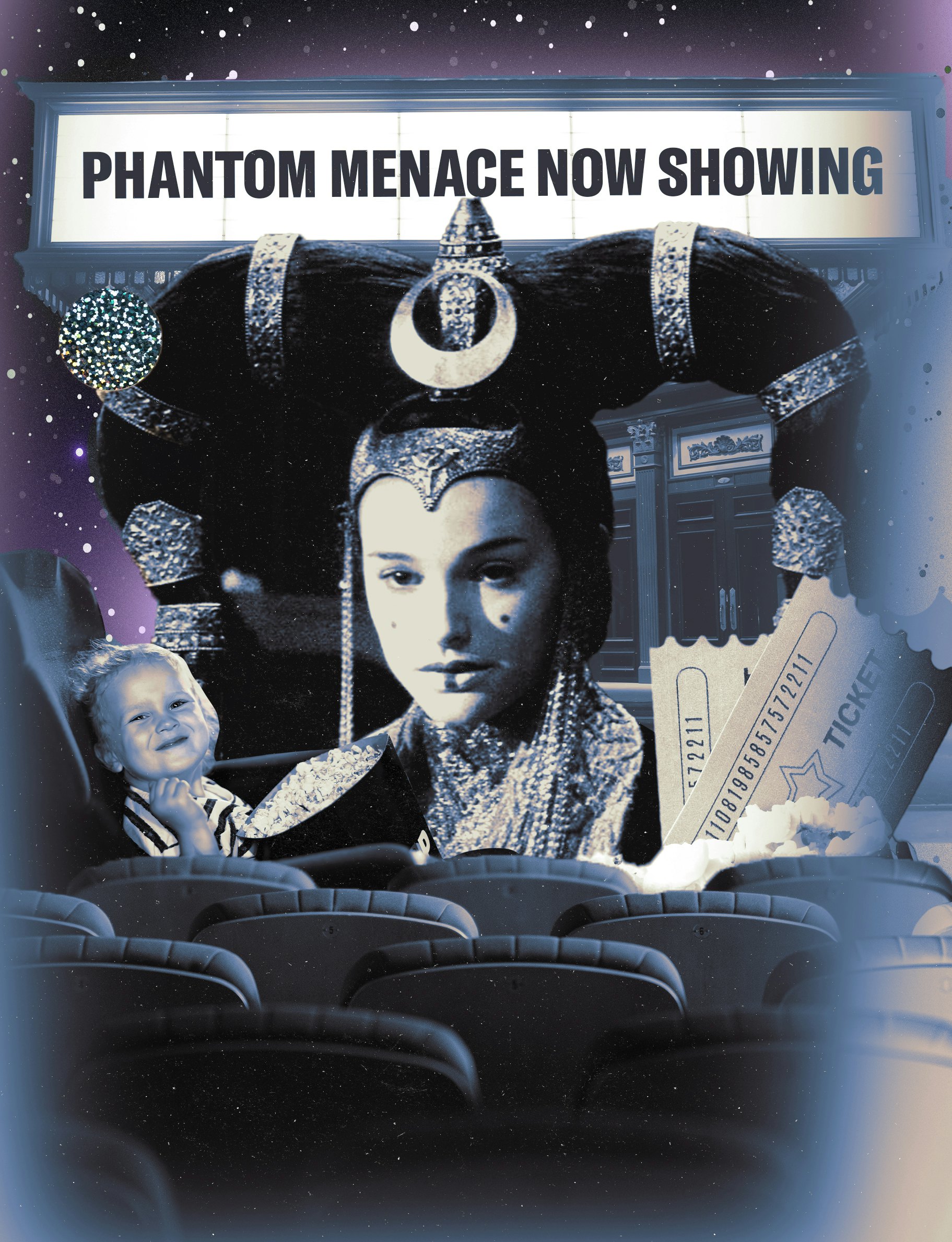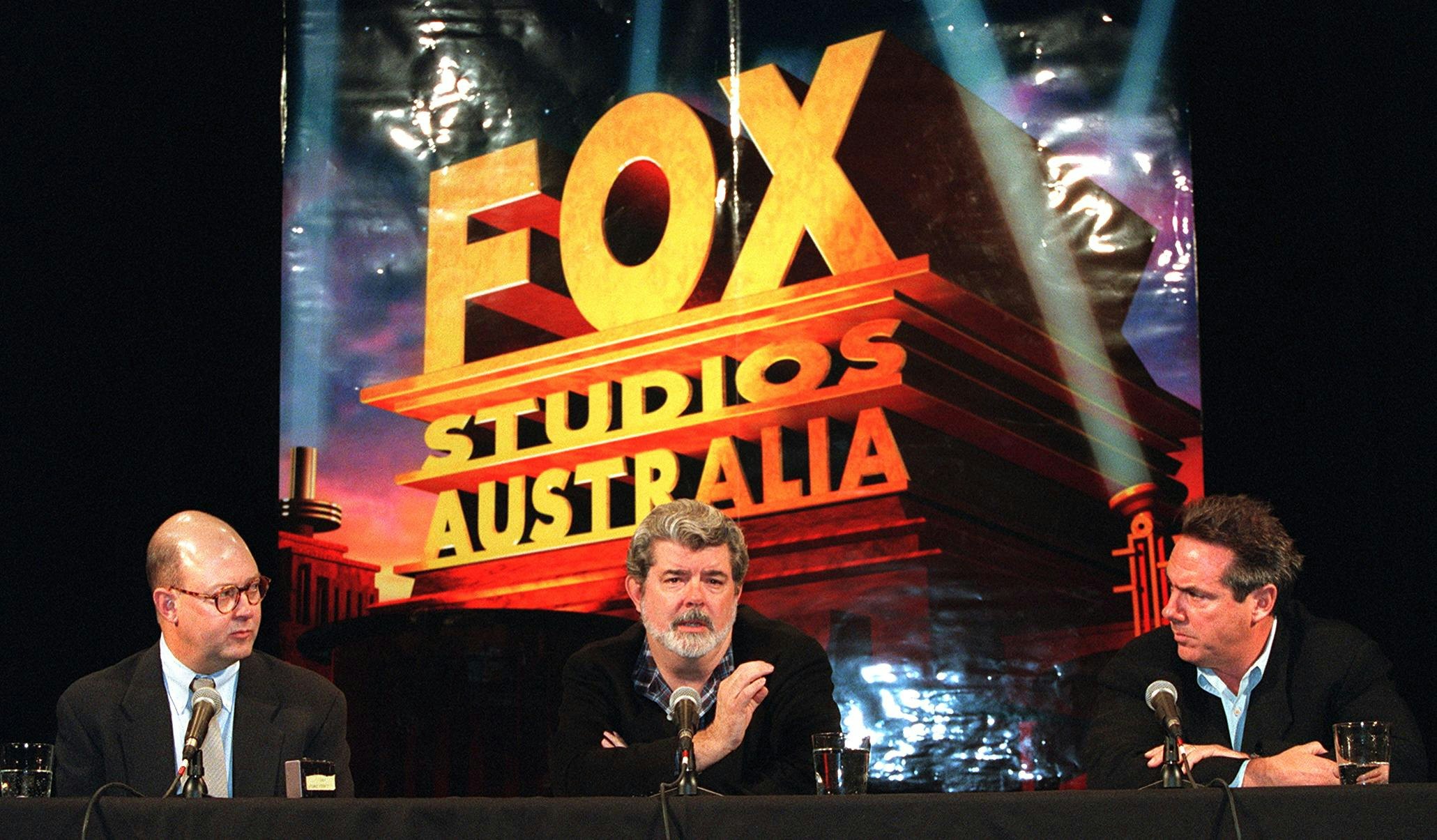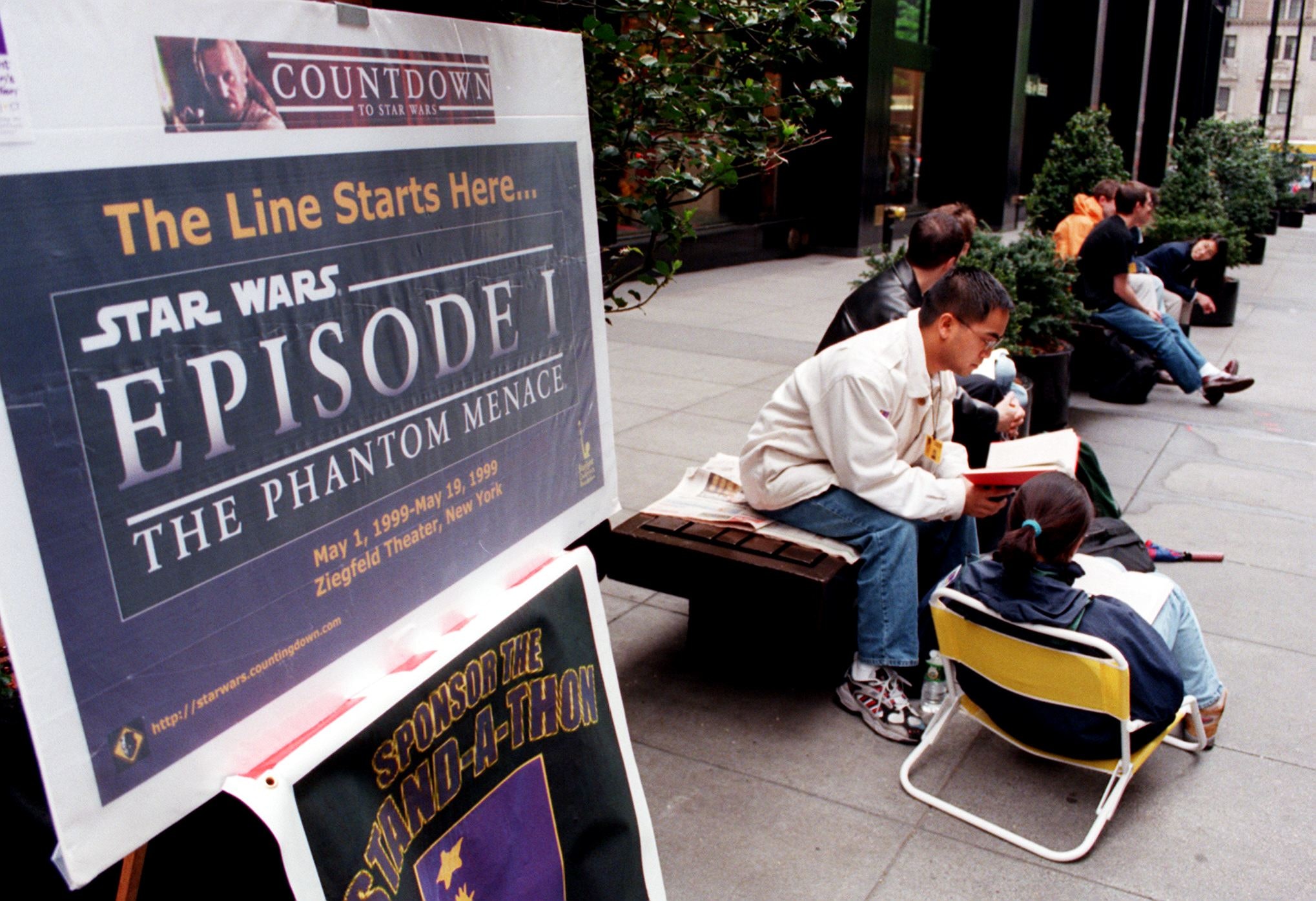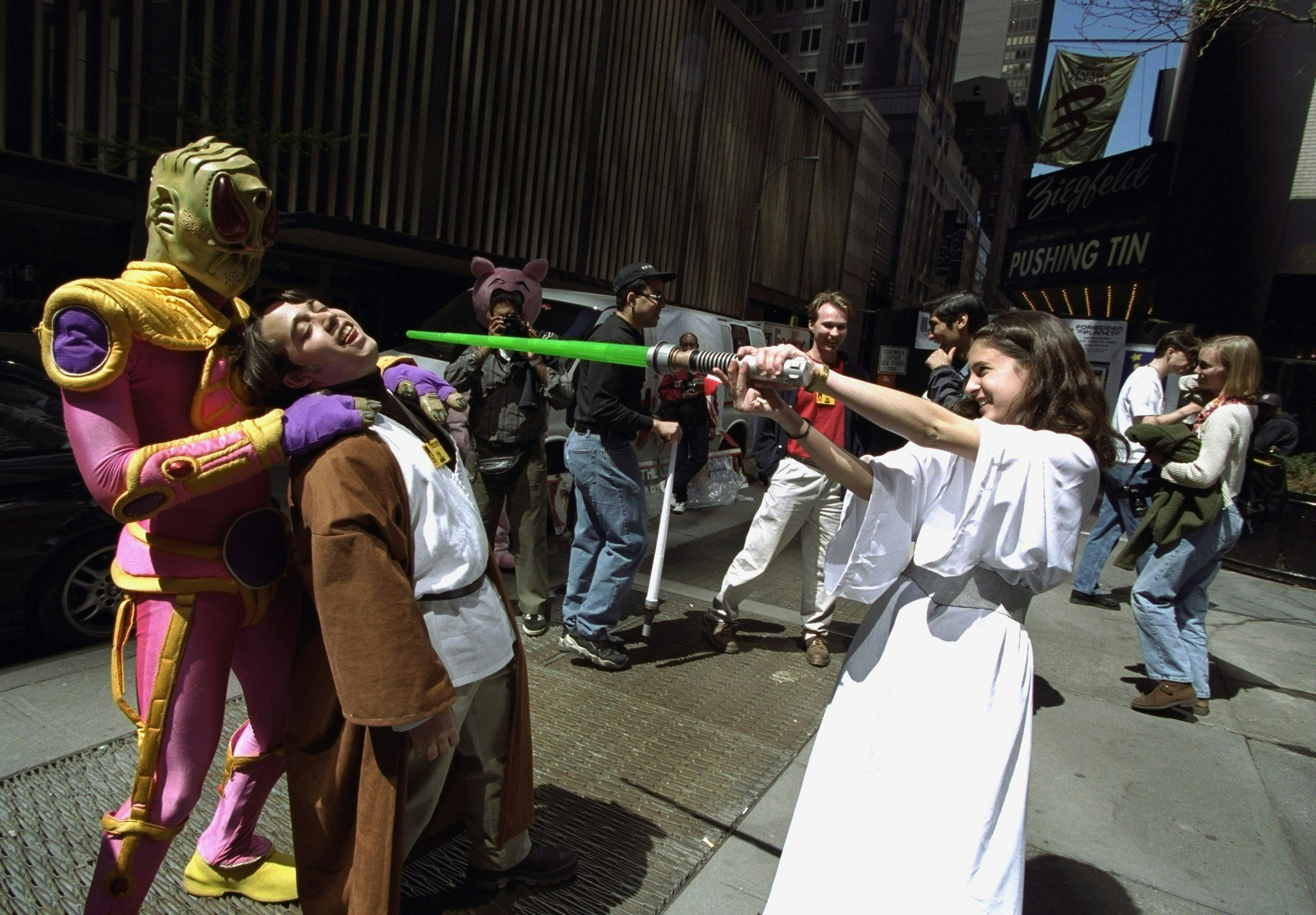
The original Star Wars trilogy was never “mine.” To a ’90s kid, they might as well have been a relic — my only experience with them until 1999 was cable marathon watches or movie nights at a friend’s household. By the time my brain developed to a point where movies actually left impressions, it’d been almost 20 years since Lucas’ science-fiction masterworks changed film history. To a youth with no relatable comprehension skills, that might as well have been a millennium. A New Hope, The Empire Strikes Back, and Return of the Jedi “belonged” to the adults who’d rave about them; superfan parents would gush about the “you had to be there” experience of watching A New Hope in the late 1970s. We, the unlucky youth, could only hear secondhand about sold-out screenings and snaking lines down avenues — until the unthinkable happened.
George Lucas announced three brand-new prequels.

By today’s standards, 30-something movies into Marvel’s Cinematic Universe, that doesn’t shatter our expectations. But back in the 1990s? The news blew little Donato’s mind like a character in Scanners. “You mean I get to watch a completely new Star Wars projected onto a movie screen, with my friends, and other fans?” In that theater, we could all be equals. Everyone was surging with the same anticipation, but more important, I was about to experience a case of Star Wars fever all for myself.
The problem with contemporary nostalgia culture — one of countless problems — is that the old guard cares more about gatekeeping what it loves than it cares about the possibility of new fans. Franchises from Ghostbusters to Friday the 13th caught backlash for gender-flipping heroes or remaking “untouchable” classics. It’s like fandom is a privilege based on age and nothing else, amongst other glaring issues.
What the most toxic displays of Richie-Kirsch-level fandom ignore is the importance of discovery for younger audiences. Where Star Wars: Episode IV — A New Hope cultivated a Church of Skywalker that’s endured ever since, Star Wars: Episode I — The Phantom Menace felt specifically tailored for moviegoers in my age range who were about to start formulating long-lasting relationships with media properties. An origin story about “Ani” Skywalker becoming a podracing legend and his protective mentorship under Ewan McGregor’s dashing Obi-Wan Kenobi was the gateway a lad like myself dreamed about at that age — even noting Anakin’s eventual fate as Darth Vader. It’s like some fans would rather their beloved franchises die than dare welcome in the next generation of fans, which is a terrible shame. Everyone deserves the right to seek comfort in franchises on their own terms — creators don’t create for a singular person, despite what today’s extreme parasocial media relationships might suggest.

I won’t argue that Lucas’ second trilogy is bulletproof. This isn’t some “The Phantom Menace Is Good Actually™” defense article. Filmmakers are allowed to branch out, try new ideas within their sandboxes, and flesh out lore as they decide, even if they’re less successful. For example, I’ll always prefer tangible miniature effects over digital animation (especially in the late 1990s and early 2000s). What dazzled me as a youngster no longer works the same for a more studied and mature film critic. Episodes I, II, and III are no replacements for Lucas’ classics, even if the general public was too hard on Jar Jar Binks. No singular fan nor self-appointed overlords control any filmmaker’s desires, and sometimes, we have to let a creator shake out all their ideas so we can move onward to something better.
That said, quality aside, the trio that started with The Phantom Menace opened Lucas’ universe to viewers who never had the chance to experience a Star Wars release up close and personal. That in-person pandemonium is what leads to lifelong appreciation. You can only watch A New Hope so many times with commercials chopping momentum or in your basement on some janky tubular television between tracking fuzz. Memories are made in movie theaters, on opening night, getting (superficially) high off the energies in a crowd.
When Star Wars: Episode I — The Phantom Menace was released on May 19, 1999, I was barely a month past 10 years old. It was the first time that I, and other fresh-faced Star Wars fans like myself, got to finally catch a Star Wars movie in theaters. The Phantom Menace was this grand unification of initial and incoming fans, a special moment that parents could share with the children they’d implanted with every Star Wars tidbit from memory. I wasn’t just going alone. I got to see the first film with my dad, a dear friend at the time, and his much more enthusiastic father (no shade to mine; sci-fi lasers and critters just weren’t his bag). But still, even if I grew up in a home where movies were just timewasters, The Phantom Menace still brought a casual appreciator like my dad and his entirely more amped son together to share a core event. Even better, it was a passing of the baton for my friend and his pops — he could finally “understand” and share in generation-spanning adoration.

That’s the secret sauce in all this fandom hubbub. Too quickly discussions can turn into arguments about what a “true” Star Wars movie is (in this scenario). How hastily the focus turns from praising someone’s work to deriding the abject horror of letting women take a prominent role (gasp!) or dare rewrite presumed mythologies into concrete narratives that don’t validate the fanfiction in people’s minds. Fandoms have become more militant than supportive, threatening any franchise’s ability to change someone’s life as it once did for that prominent “Old Guard.”
Luckily for my generation, The Phantom Menace and what came after radicalized a new breed of Star Wars fans. For every Gungan-hating, Darth-Maul-erasing dinosaur out there who says things like “Only one Star Wars trilogy matters,” there were kids like me who dove head-first into Lucas’ new episodes. While my friends were still rocking Mario Kart 64, I was trying to beat Sebulba in Star Wars Episode I: Racer. When it was my turn to bring a CD into art class for everyone to listen to, I brought in John Williams’ The Phantom Menace soundtrack. Pushing obvious comments about marketability to the side, how cool is it that a franchise like Star Wars could play a similarly prominent role in the lives of children from entirely different eras?
It’s the same argument I make when defending remakes like Friday the 13th (2009). Who cares if you despise this newfangled interpretation of what you once adored? Jason Voorhees from the 1980s still exists, the same way Luke, Leia, and Han are preserved, like carbonite, on film in their original presentations. Remakes, reboots, and sequels don’t erase what already exists (unless a rare retcon happens), so why steal the joy from someone else who finally sees what they call “their” Star Wars? Or “their” Friday the 13th? At worst, another soul loves something you reject. At best, the franchise gains a new champion, and maybe they revisit what already exists, finding out they, too, share an appreciation of the original material that started it all.
Maybe I’m restating that obvious, but it bears repeating. I’ve endured 2000s horror remake debates since Platinum Dunes started defying the wishes of 1980s genre purists left and right. I witnessed the cowardly retaliation against lady Ghostbusters and the horrid bullying against actors like Kelly Marie Tran just for existing in a galaxy far, far away. Between GamerGaters, Snyder’s minions, and countless other gatekeepers with the worst intentions, fandoms have tarnished the magic of many unbelievable stories. Even worse, their negativity gets frequent attention on social media. Feeds are gunked with poisonous sludge that spreads like a viral plague, which is the ultimate shame.
Let this be a reminder that The Phantom Menace, Attack of the Clones, and Revenge of the Sith were more than that for wide-eyed, soon-to-be Star Wars fans about to get their first taste of in-theater action. Are they Lucas’ best work? Hardly. Did they still add additional ranks of “New Guard” Star Wars fans who’d go on to share those memories with entire new generations once The Force Awakens came out? One-hundred percent. Episodes I, II, and III are more than “high ground” memes and fodder for complaints to many still-active Star Wars fans. They might not be perfect, but they were ours.







